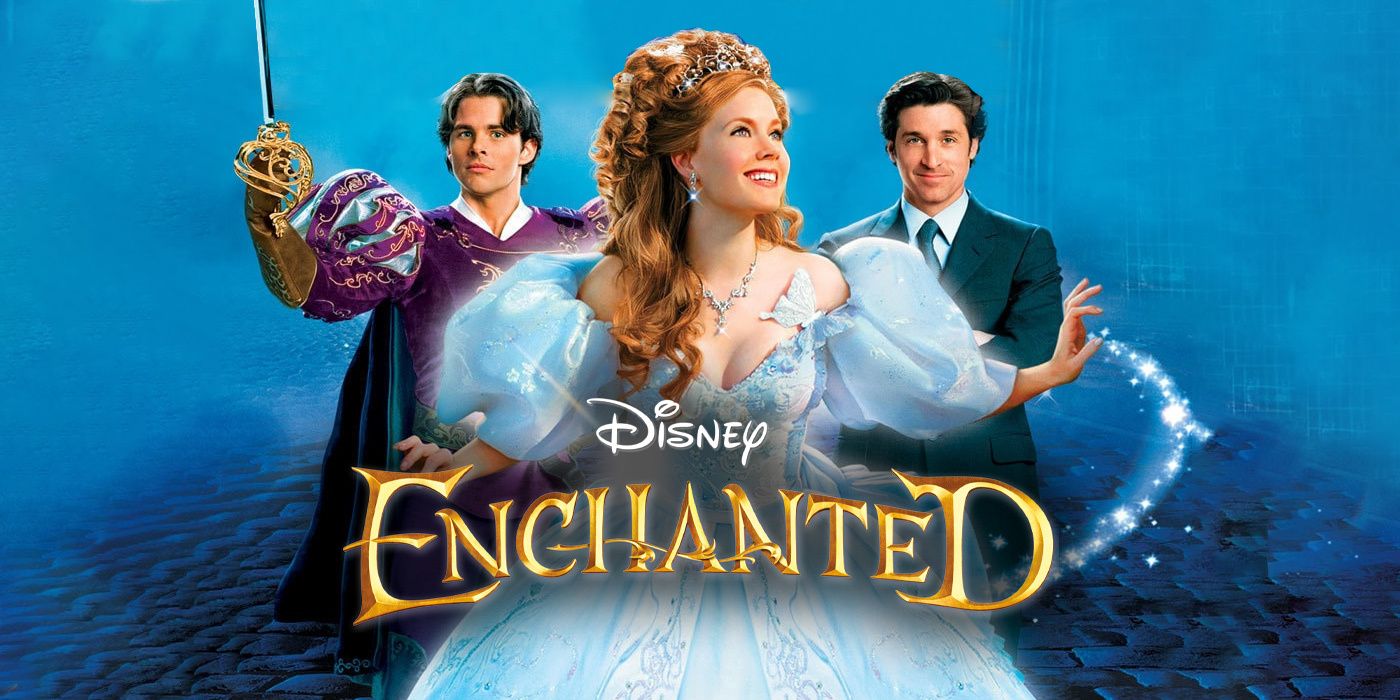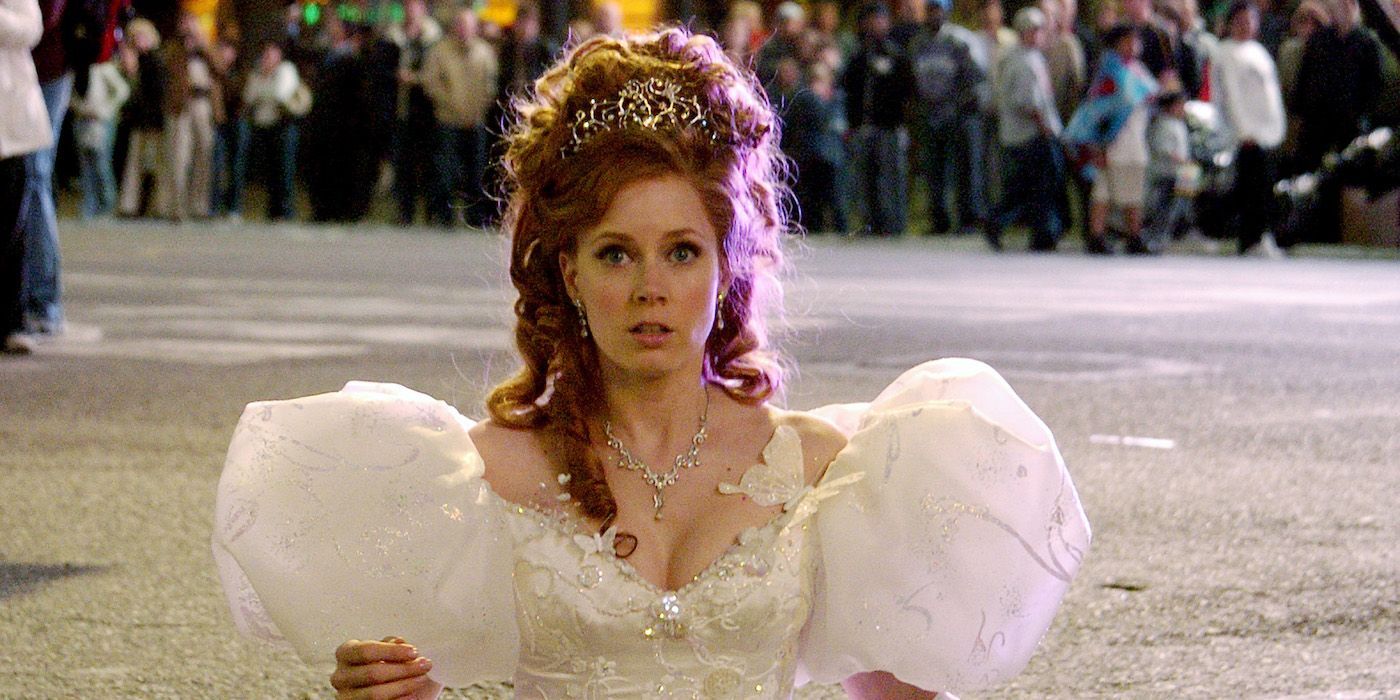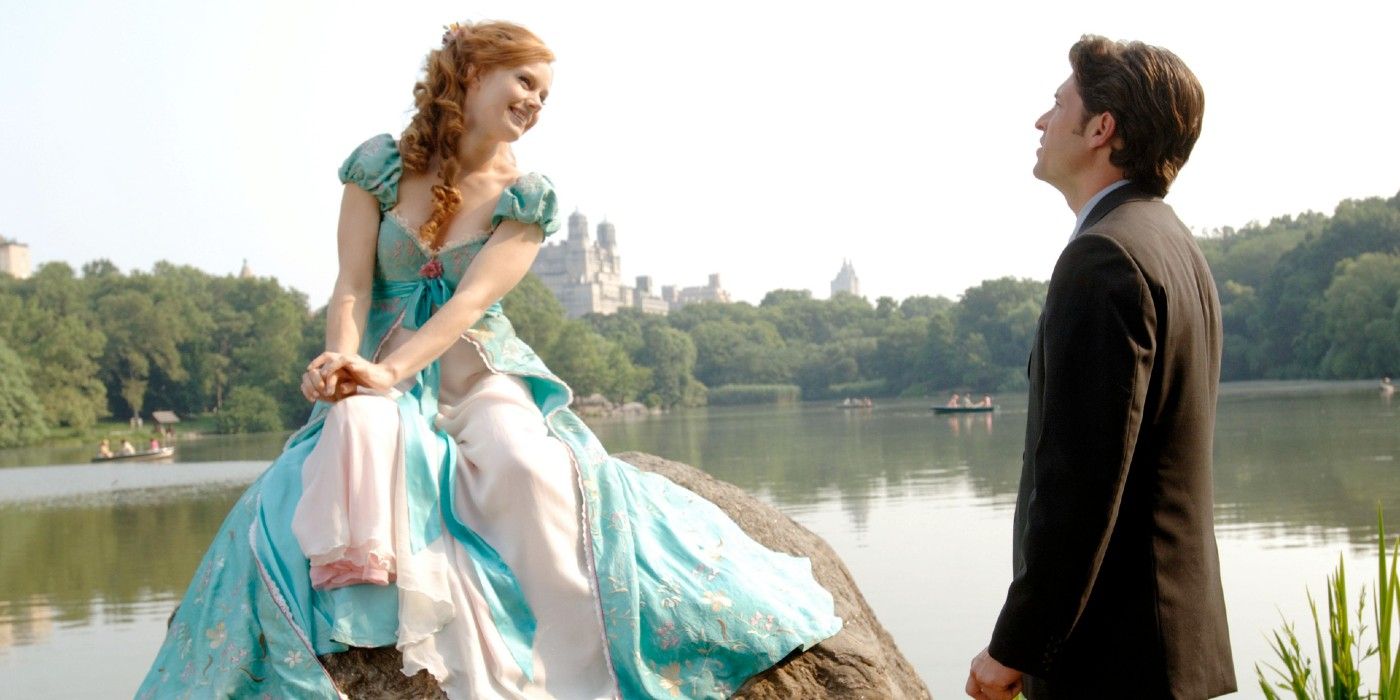Though its premise is founded on deconstructing and parodying fairy tale archetypes, the reason Disney’s Enchanted was so successful is the love it actually displays for the genre as a whole. The movie is able to both criticize the genre’s more fantastical elements while still paying respect to the aspects of these stories that keep them in the public consciousness for so many generations. The film truly acts as a love letter to the Disney films it is based on.
The 2000s brought the concept of attempting to modernize the classic fairy tale to the forefront of popular media, though to varying levels of success. At the time, there was this idea that the way to improve a fairy tale princess was to make her extremely goal driven, with the best way to show this being to give her a job or make her able to hold her own in combat. However, with time the “girl boss” heroine has grown to be a tired trope. Instead, the female characters that continue to remain beloved within the public consciousness today are the ones who are written as fully realized and dimensional, with their own strengths and weaknesses, as though they were real people. Enchanted’s status as a classic film is cemented by how it handles these types of character arcs. Through its leads and their relationships, the film argues that fantasy and reality can and should coexist, and the reason we continue to adore and remember these fairy tale stories is because they inspire us to dream when the realities of life get us down.
One of the major and most memorable aspects of Enchanted is the film’s leading lady, Giselle (Amy Adams), and how her story arc concludes with her becoming a well rounded character. The film follows Giselle who, after falling in love with Prince Edward (James Marsden) and deciding to marry him the following day, is sent from her animated home of Andalasia to New York City, where she is forced to face the harsh realities of the real world. Giselle starts the film as a stereotypical fairy tale heroine, dreaming of the Prince that will whisk her away and they will share true love’s kiss and live happily ever after. Once she is transported to New York, however, she meets Robert Philip (Patrick Dempsey), a single and jaded divorce lawyer, and his daughter Morgan. Here, Giselle’s fantastical personality quirks quickly become impractical for those around her. Her singing, which she uses to summon any animals in the area to aid her, brings swarms of rats and cockroaches, and her overly emotional outbursts result in Robert being reprimanded at work for being unprofessional. Her naivete is contrasted with the world around her time and time again— like when the homeless man steals her tiara and runs away, or how she is almost run over by cars in Times Square. However, throughout the film her kindness and hopeful outlook is never punished by the narrative. In actuality, her kindness is what changes the world around her, as well as the other characters she comes into contact with. When the divorcing couple she upset earlier in the film returns later, they are very much in love because she reminded them of the happy times they shared, and they tell of how they’ve realized they shouldn’t give up all of the good times because of a few bad ones. During “That’s How You Know,” Giselle brings the whimsy of her fairy tale world into New York, inspiring an enormous song and dance number that takes over Central Park, and even gets Robert to (somewhat) play along by the end. Because of her propensity for the romantic, Giselle ultimately reminds everyone else to find and remember that spark of hope and positivity they were missing in their lives previously.
Her eventual relationship with Robert reinforces this message through both of their character arcs, with Giselle learning to be more grounded and Robert learning to enjoy the magic of life again. Before she arrived, Robert was cynical and refused to believe in the concept of true love or happily ever after, partly due to his wife leaving him. He acts as the realist to her idealist and broadens her worldview and perspectives on life, while in return she reminds him that the world can be magical if he lets it. By the second half of the film, Giselle has fallen in love with the real world and no longer wants to leave to Andalasia with Prince Edward, who also traveled to New York in an attempt to rescue her. She won’t even burst into song to finish his duet, being too lost in thought to join in, and at the ball, instead of wearing her flowy and flowery dresses she opts for a sleek and modern dress to visually complete her character arc. Meanwhile, Robert is getting to see first hand the results of Giselle’s positivity through his encounter with the divorcing couple mentioned previously, leading him to notice the impact she has made on his perspectives about life and love. By the end, Giselle is still as passionate and fun loving as she was at the beginning of the film but is now capable of comprehending the complexities of reality. She has brought fantasy and joy back into Robert and Morgan’s lives, running and dancing around Robert’s apartment with him and Morgan, and opens her own dress shop with rats and pigeons as workers. She has reminded Robert what it feels like to dream and hope for happiness, just like fairy tales often do for audiences.
Giselle has a similar effect on Nancy (Idina Menzel), despite technically being a romantic rival for her. When Robert and Nancy are seeing each other in the beginning of the film, their relationship is very pragmatic and practical. Nancy says she admires that Robert set boundaries with her in regards to his daughter to make Morgan more comfortable. However, what Nancy actually desires is a dreamy romance like the ones in storybooks, which Robert cannot give her. Giselle’s idea of sending a rose garland with doves and an invitation to an upcoming ball warms her heart and surprises her because Robert had never done something like this previously, and she believed the gift was his idea. Once at the ball, she openly admires the way that Prince Edward describes Giselle as his true love because she had never heard it said in such a serious and straightforward way before. It’s not until Prince Edward suggests that Nancy joins him back in Andalasia after Giselle and Robert get together that she realizes this ideal and picturesque romance is actually possible for her. Nancy is able to get the passionate and romantic relationship that she secretly wanted because Giselle and Prince Edward remind her of what love can be.
Both of the couples exhibit the balance of realist and idealist by the end of the story with their desires for finding fantasy amidst reality. Enchanted works so well because it knows that even though fairy tale stories can be a bit ridiculous and over-the-top, they dare us to hope for better, and that maybe we could attain some sort of fantasy ourselves one day, despite how much reality tries to keep us down. This is the core of why fairy tales have been so prolific through time, and by paying respect to this concept the film has a much stronger heart at its center, and a stronger emotional connection within its lead characters. Enchanted shows us that if you want to attempt to modernize a fairy tale, you must still keep the elements that appeal to our most human desires for happiness and hope, in order to make it as memorable as the fairy tales these adaptations are based upon.



